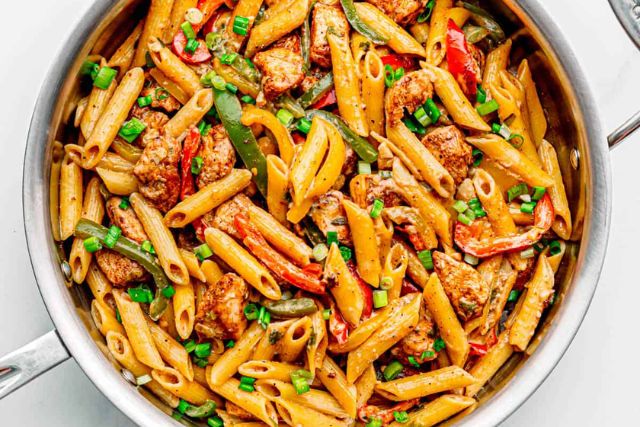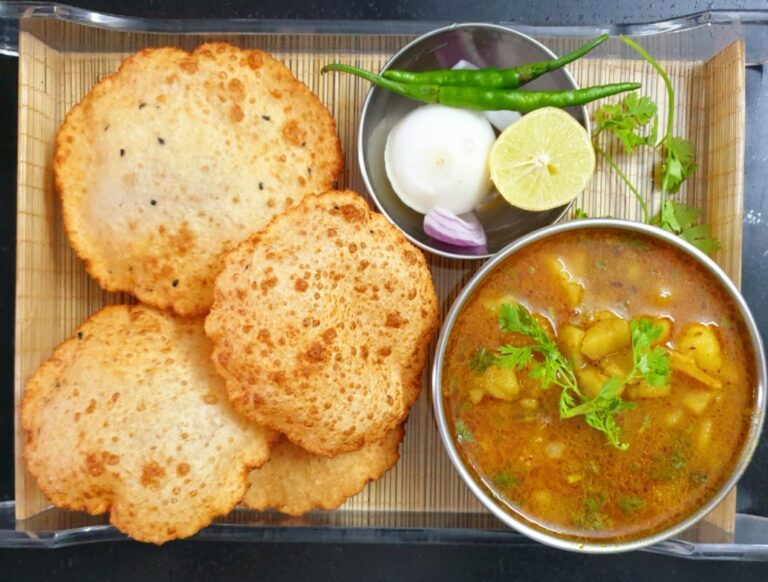🥣 Easy Ghugni Recipe – Authentic Bengali Street Food at Home
Ghugni is more than just a dish — it’s an emotion for anyone who’s grown up relishing Indian street food. Made with dried yellow peas, spiced gravy, and garnished with onions, lemon, and coriander, Ghugni is a protein-packed, flavorful snack from Bengal. Whether you’re craving a light breakfast, tea-time snack, or looking to impress with regional Indian cuisine, this recipe is your go-to.
Ghugni is a popular Bengali street food made with yellow peas, seasoned with a variety of spices. Learn more about Bengali street food here.
👉 Also try Bhindi Fry Recipe if you’re exploring regional Indian flavors.
Ingredients List
| Ingredient | Quantity | Notes |
|---|---|---|
| Dried Yellow Peas | 1 cup | Soaked overnight |
| Onion | 1 medium | Finely chopped |
| Tomato | 1 medium | Chopped |
| Green Chilli | 1 | Slit |
| Ginger Paste | 1 tsp | Fresh preferred |
| Turmeric Powder | ½ tsp | |
| Red Chilli Powder | ½ tsp | Adjust to taste |
| Cumin Powder | 1 tsp | Roasted |
| Garam Masala | 1 tsp | Optional but adds aroma |
| Mustard Oil | 1 tbsp | Authentic Bengali flavor |
| Salt | To taste | |
| Lemon Juice | 1 tsp (optional) | For tangy twist |
| Coriander Leaves | For garnish |
How to Cook Ghugni

Break into 7–8 clear steps:
- Soak and Boil Yellow Peas
- Sauté Onions & Chillies
- Add Spices and Cook the Masala
- Mix in Tomatoes and Cook Till Soft
- Combine Peas and Masala
- Simmer and Add Water As Needed
- Finish with Garam Masala
- Garnish and Serve
📌 Also explore Vancho Cake Recipe if you’re planning a complete meal with dessert.
Serving Tips & Variations
- Serve hot with puris, parathas, or just on its own.
- Add toppings like finely chopped onions, sev, or a dash of Chaat Masala.
- Make it more street-style by adding tamarind water.
- For a fusion twist, serve it as a chaat base with dahi and chutneys.
Why You’ll Love This Recipe
- High in protein and fiber
- Budget-friendly and simple
- One-pot recipe
- Vegan-friendly
- Customizable spice level
Nutritional Info
| Nutrient | Per Serving |
|---|---|
| Calories | ~220 |
| Protein | ~9g |
| Carbs | ~35g |
| Fat | ~5g |
FAQs
Can I use white peas instead of yellow peas?
Yes, but yellow peas give the traditional Ghugni texture and taste.
Is Ghugni spicy?
It’s mildly spicy, but you can adjust it to your preference.
Can I prepare it in advance?
Absolutely! It keeps well in the fridge for 2–3 days.





